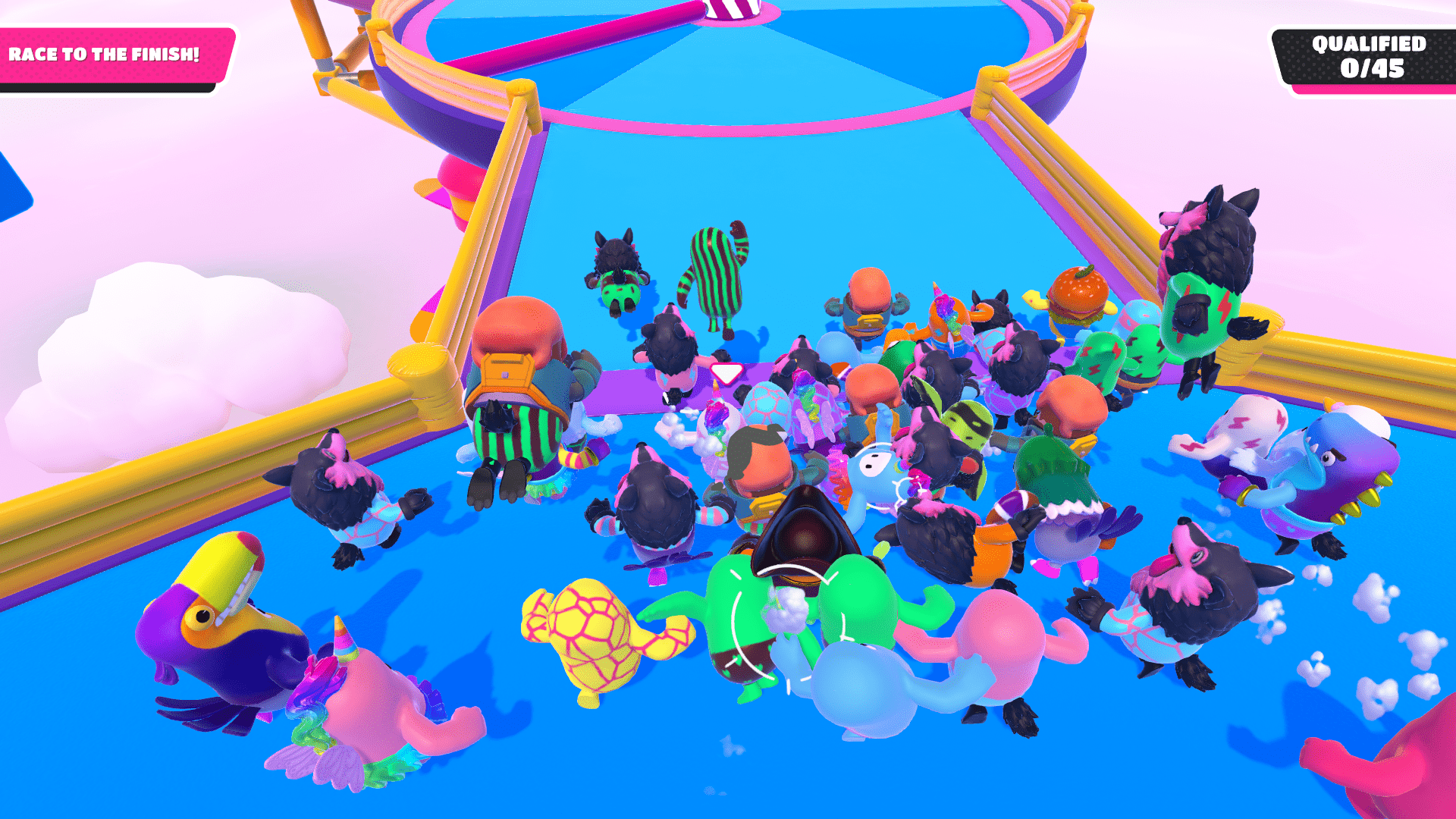
For my Critical Play this week, I decided to play Fall Guys with my friends! This is a game created by Joseph Walsh and developed by Mediatonic. It is available on many platforms, however, I played it on Playstation. I particularly chose this game because I find it a great example of balancing humor, friendly competition, while having friends cheer someone else on. These three elements of Fall Guys are very similar to what we want to achieve for our game!
It is quite hard to categorize Fall Guys into a theme, however, I would love to highlight how it’s essentially a whimsical battle royal. This doesn’t mean that the game is easy: its mechanics strike between being easy to pick up, but hard to optimize. These mechanics range from classic platforming ones (such as jumping/dashing), to having players be eliminated in a variety of ways (racing, falling, sports, etc). The fun that is promised to the player has a very strong link to its thematics: It promises a very chaotic and fast paced atmosphere, but it emphasizes humor and friendly competition. Battles are light hearted however there is still a thrill of overcoming challenging parts. This type of fun, that combines fellowship with competitiveness, is achieved through the chaotic number of players in each game, their goofy movement, and well thought out level designs.
Graphic Design decisions are perhaps Fall Guy’s greatest strength. The game’s extremely vibrant color palette and “cute” character design with some cartoonish exaggeration really evoke the chaotic and friendly nature of the game. It differentiates itself from other battle royals because it doesn’t focus on combat; instead it focuses on creating a party-game atmosphere with mini games and low stakes competition. I also noticed that it has very strong design elements from the patterns for friends’ videos we saw in class. It keeps verbal communication to a minimum, and instead has very effective sounds (in line with its whimsical theme) the characters can produce to communicate (thus reducing potential for abuse! And incentivizing positive stranger interaction). The game could be improved by adding more mini games, as people with more experience did seem bored (also, everyone I know that used to play it, has kinda stopped). Additionally, enhancing social features like allowing friends to team up in-game, and refining the matchmaking system could further improve the player experience!
It had been a long time since I played the game. Instantly, one thing that I really wanted to see as a designer for my own game was how it takes advantage of “party-like aspects”. It was fun to see the game not take itself too seriously: movement is clumsy on purpose, so you can focus on the chaos. The biggest highlight as a designer was to notice how the initial level’s space is designed with the intent of it being too small for all the players to go through. This inherently forces there to be people jumping all over each other and people falling off the level in many funny interactions. This framing instantly shows the players what the game atmosphere is all about.


